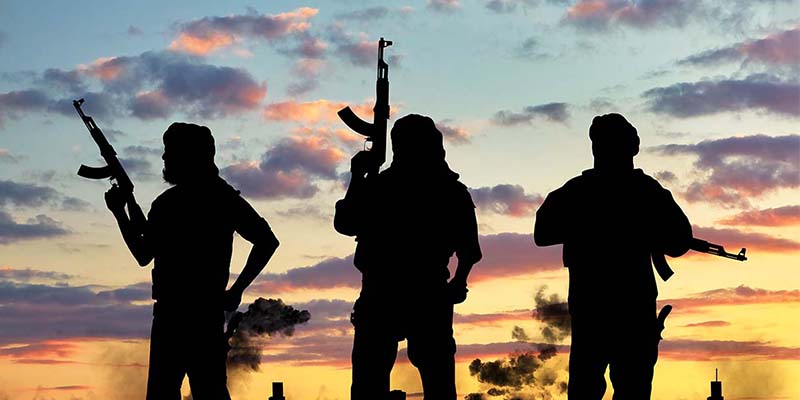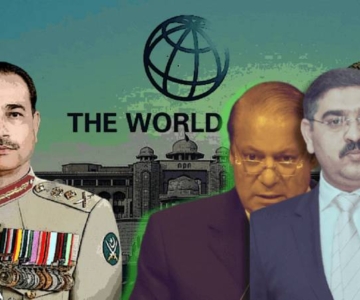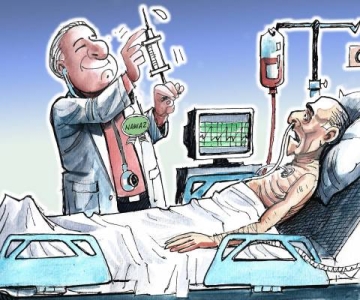A new report by the Institute for Economics and Peace, an international think tank based in Australia, brings to light some hard data on global terrorism. During November 2015, a series of terror attacks in Beirut, Paris, Nigeria and Mali reignited the debate on the global challenge of terrorism. In the aftermath of the Paris attacks, another coalition is being gathered to bomb Syria to eradicate the Daesh or Islamic State (IS). It is unclear if a militaristic response would yield results in Syria, given the complexity and competing interests of Middle Eastern actors, Russia and the West. In fact, the lack of a multilateral approach has only served to benefit the IS in the recent past.
The Global Terrorism Index (GTI) report confirms that terrorism, globally, is on the rise. Since 2001, there has been a five-fold rise in terrorism. The year 2014 was deadliest with 14,000 terrorist attacks in 93 countries, leaving 32,000 dead. The number of terror victims was 80 per cent more than in 2013. At the same time, countries that battled 500 or more terrorist attacks have seen a staggering increase by 120 per cent since 2013.
The other startling fact, according to the Institute for Economics and Peace, is that Boko Haram, the Nigerian militant group, was the biggest killer in 2014, and not the IS. During the last year, 6,644 deaths attributed to Boko Haram signified an increase of over 300 per cent compared to the deaths occurring in 2013. The IS was the second-most lethal group as it killed 6,073 people. Tactics used by Boko Haram are deadlier as it indiscriminately targets private citizens in its attacks.
The GTI also reiterates the sad fact that Iraq remains the worst-hit among countries. Its insecurity is a stark reminder of an ill-conceived military campaign without clear objectives. More than 30 per cent of global terrorism victims in 2014 were Iraqis, and more than 9,900 Iraqis died in 3,370 terrorist attacks across the country. Unsurprisingly, the IS was responsible for 95 per cent of terrorist attacks within Iraq.
The countries affected by terrorism are mostly located in conflict zones, and not in the advanced world where terrorism is used as a scare tactic to shape policy and drum the war machine. In the last 15 years, only 4.4 per cent of attacks and 2.6 per cent of deaths took place in Western countries. Four major terrorists attacks (the 9/11 attacks in the US, the Madrid train bombings, the Norwegian massacre and the London bombings) account for 90 per cent of those deaths. Of course, GTI did not cover the Paris attacks.
The five worst-affected countries in 2014 were Iraq, Afghanistan, Nigeria, Pakistan and Syria. Pakistan was the fourth worst-hit country by terrorism. However, it dropped from the third to the fourth place, with violence declining across the country. In 2014, 1,760 people were killed in 1,821 terrorist attacks across the country and there are still dozens of terrorist groups active inside Pakistan.
The GTI also highlights the state of cities that have suffered the most in the recent past. Karachi and Peshawar were among the world’s 10 cities with highest fatality rates relating to terror attacks. Peshawar was ranked fourth and Karachi was at ninth place. The 2015 report will reflect the recent improvements in security achieved through the army operations in Karachi. That the residents of these cities continue with their lives is a testament to their extraordinary resilience.
While sections of the media and the political elite in India have drummed up the fear and threat of religious extremism, GTI tells a different story. Religious extremists were responsible for only 14 per cent of the total deaths in India that occurred due to terrorism. Maoist groups were responsible for 41 per cent of such deaths, while separatist groups in the northeast were responsible for 25 per cent of deaths. The terrorism issue in India, therefore, requires a different set of policy options that must include less scare-mongering tactics that demonise Muslims.
The GTI also tempers the terrorism debate by illustrating that more people die of homicides and other causes than terrorism. For instance, the global homicide rate is 13 times the terrorism rate: 437,000 people died in 2014 due to homicides compared to 32,685 deaths caused by terrorist attacks.
Closer to home, Pakistan has been undoing the militant infrastructure since June 2014. Despite the reduction in the number of terror attacks, the regional dynamics are worrying. Reconciliation between the Afghan Taliban and the Ghani Administration remains uncertain. The Pakistani Taliban, reportedly, have found refuge in Afghanistan. More worryingly, the IS has been making inroads into the region. For instance, two IS training camps were identified in Afghanistan’s eastern province of Logar.
Pakistan’s army chief has said that the IS will find no place in Pakistan. This is encouraging but to ensure this, the complete dismantling of the militant infrastructure would be required. Media reports have alluded that the Lashkar-e-Jhangvi was trying to ally itself with the IS. Perhaps, this is one of the reasons for the elimination of its leadership in recent times. Operations against sectarian outfits and the TTP have improved the security climate, but the existence of Kashmir-centric militias and especially their base the unregulated seminaries remain an unfinished agenda of counter-terrorism efforts in the country.
It is a truism that military action is a short-term instrument. Long-term security requires governance reforms, especially the much-needed restructuring of the police and prosecution services, reforming of intelligence agencies, improving the judicial system and amending archaic procedural laws to rescue the criminal justice system. Marginalised groups, such as residents of Fata, Balochistan and Gilgit-Baltistan need a political voice and inclusion into the national mainstream. It seems that there is some political will to finally end the apartheid in tribal agencies by treating the people there as full citizens, and Baloch separatist leaders’ willingness to talk is also a welcome sign. Parleys should begin sooner rather than later.
All of these measures cannot guarantee long-term security unless the civil-military combine does not undertake a foreign policy review, especially questioning why a militia should be Pakistan’s only option to gain influence in Afghanistan. The much-talked-about shift in the military’s approach to extremist groups needs to be leveraged by parliament to enact much-needed legislative changes. Pakistan’s future direction has to be free of constructed doctrines from Islamic nationalism to jihadism that have outlived their utility and turned into a liability.



